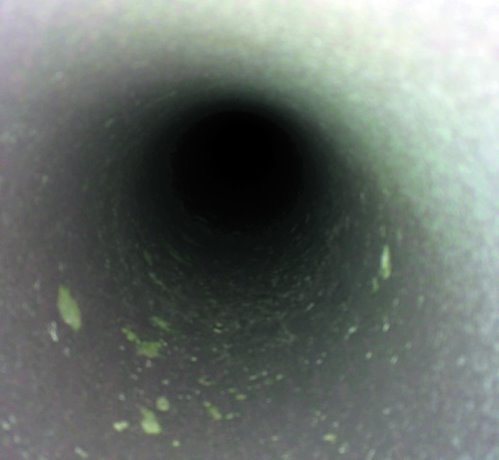Utilities across Canada are extending the life of watermain infrastructure by cleaning and lining the interior surfaces of their pipes.
Envirologics Engineering Inc. of Bracebridge, Ont. hopes to shake up the industry with its Tomahawk System, a trenchless remediation technology that leaves pipes dry and ready for lining just a few minutes after pipes are cleaned.
Tomahawk works by using triple-washed and heat-sanitized abrasive granite to scour the interior of the pipe. Sealed bags of aggregate are introduced from a small launch pit at one end of the main and driven through the pipe using suction supplied by a vacuum truck on the other end. The process allows the contractor to clean as much as 450 feet of pipe at one time.
"Water main remediation involves a number of costs, from the actual cleaning and lining to supplying customers with temporary water while the remediation process takes place," says Brian Thorogood P. Eng., general manager with Envirologics.
"A wet method of pipe cleaning will require the pipe to be thoroughly dried before any lining can be applied. Using Tomahawk, all of the grit and any pipe contaminants are drawn into the vacuum tank and the pipe is clean and dry for immediate lining. If utilities are motivated, they can schedule a same-day return to service and avoid installing temporary water lines."
Envirologics has completed water main remediation projects in cities including Napanee, Peterborough, Cambridge Victoria, Vancouver, Montreal, Quebec City and Moline, Illinois. On some projects, the company is contracted by the utility directly while on others, it’s sub-contracted to a pipe lining specialist.
The primary target of the Tomahawk system on most projects is tuberculation, the formation of nodes of oxidized iron inside a pipe by iron-activated bacteria. Tuberculation not only causes water quality problems, but can also significantly reduce water speed and pipe volume.
"We can clean the pipe out to its original specifications, but we recommend immediate relining because the problem will likely replicate itself over time," says Thorogood.
"The time to reline is when the pipe is dry and clean."
He notes that the process has attracted the interest of a number of drought-stricken utilities in the U.S. "In some of those areas, the amount of water used with some of the cleaning technologies is actually a serious issue," he says. "Using no water at all is intriguing to them."
In Saint John, Tomahawk was used in the first full-scale project to successfully remediate water pipes coated with bitumen, a lining material derived from coal tar.
"We had proved to ourselves that we could tackle the problem using a length of bitumen-coated pipe at our own test facility," says Thorogood.
"In Saint John, we’ve completed two contracts cleaning the pipes simultaneously of both bitumen and tuberculation."
In Moline, the process was tested successfully with an industrial vacuum unit outfitted with a HEPA filter.
"That was an important milestone for us," says Thorogood. "The pipes in Moline weren’t made of asbestos cement (AC), but it proved to us that we could clean a pipe made of that material and capture all of the dust created by cleaning with the HEPA filter. There’s no other dry process that can safely remediate AC pipe."
The system has evolved over the years since it was developed in 2008. The original concept involved blowing the aggregate through the pipe instead of drawing it through by vacuum. The system now also includes a remote camera, the Tomahawk Scout, which can monitor the cleaning process in the middle of a torrent of abrasive grit.
Tomahawk service is currently delivered by a sister company, Evanco Environmental, while Envirologics concentrates on technology development.
The company is currently testing its own barrier coating technology that can be delivered by the same air stream used to deliver the abrasives. It’s piloting the process in two Canadian cities this year.
"It’s not quite as fast as same-day return to service," says Thorogood. "We’re looking at about 24 hours, but it’s significantly less expensive."

1/2
Photo:



Recent Comments
comments for this post are closed